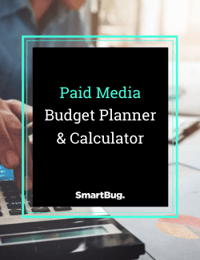
Every organization is looking to get more eyes on their website. One of the core functions of the marketing department is not only to ensure the website is visible, but also to work toward getting more quality traffic to landing pages.There are several ways to increase visibility of the website—through paid, owned, and earned media. In this article, we’ll focus on paid media best practices for landing pages.
Why Choose Paid Media?
The goals of every organization differ, however, I’ve yet to come across a company that is looking to generate fewer leads. Gartner defines paid media as “marketing efforts that involve a paid placement, such as pay-per-click advertising, branded content and display ads.”
Paid media involves “paying” other sites to display your advertisements on their platforms. Simply broken down, paid media includes search engine ads, paid social ads, and out-of-home ads. Paid media complements inbound marketing, acting as a catalyst for increased lead generation, which is why many organizations invest a portion of their marketing dollars to this channel.
Because these platforms have vast impression potential, the proper paid media strategy can allow you to reach tens of hundreds of thousands of customers. In fact, HubSpot reported that Purple Mattress saw a nearly 35 percent boost in brand consideration for their mattress sales as a result of Google Ads audience targeting via YouTube.
What Are Best Practices for Paid Media Landing Pages?
So, how do you increase conversions on your paid media landing pages? Start by following these best practices.
1. Optimize for Mobile
This year, the spend in mobile advertising is expected to surpass $240 billion—for good reason. Think about today’s consumer: We’re constantly on the go, relying on the devices readily available in our back pocket. In a 2021 Statista survey, 79 percent of respondents said they spent at least three hours on their phone daily. That’s a lot of potential customers you can reach via paid media. When a consumer clicks on your ad, make sure they can easily navigate the landing page on their mobile device.
2. Remove Navigation
When a visitor clicks your ad, it means they’re interested in the offer you’re providing. The visitor finds themselves on your paid media landing page, and that’s exactly where they should be. Remove all navigation on the page as a means to encourage the visitor to convert right then and there. The visitor should see the landing page and know exactly what you want them to do next.
3. Promote a Single Offer
Have you ever visited a website page that is asking you to download an offer, schedule a demo, and contact the company all at the same time? Make sure the landing page you’re promoting has a single offer, so the visitor understands what they’ll be getting if they submit their information.
4. Write Clear, Concise Copy
A visitor is only going to convert on your landing page if the offer provides information relevant to their needs. In other words, it helps them solve a problem. Make sure the copy on your landing page is clear and concise, accurately explaining what they can expect to receive if they hand over their information. You may also include an image of the offer on the page, because many consumers prefer visuals. When adding images, pay extra attention to load time to ensure they render quickly.
5. Keep Important Information Above the Fold
The last paid media best practice for landing pages is to keep important information above the fold. When a visitor lands on your page, they should see the key information without having to scroll. Make sure the action you need the visitor to take is clearly visible upon the page loading.
For organizations looking to increase brand awareness, generate leads, and grow revenue, paid media is an essential component of the marketing strategy. Start calculating your budget with our Paid Media Calculator, and determine the potential return of investment on your paid media approach.

About the author
Aubreigh Blair is the SVP, Client Operations for SmartBug. After being introduced to HubSpot in 2014, she began implementing the inbound methodology for both B2B and B2C clients. Aubreigh has experience in a variety of industries including SaaS, financial services, manufacturing, automotive, healthcare, and senior living. Today, she strategizes and implements operational efficiencies to align internal teams, with the ultimate goal of driving revenue growth. Read more articles by Aubreigh Blair.










